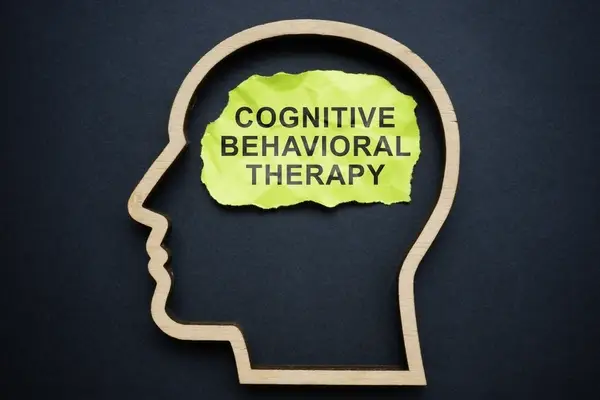Introduction
Cognitive Behavioral Therapy (CBT) and Rational Emotive Behavioral Therapy (REBT) are two critical frameworks in clinical psychology, each holding a distinct place in therapeutic practices. While these two therapies share common ground—particularly in their focus on altering patients’ beliefs—they are far from interchangeable. The nuances between CBT and REBT are essential for mental health professionals to understand, as these differences can significantly influence therapeutic outcomes.
CBT is often hailed as the most popular form of talking therapy, widely recognized for its effectiveness in treating various mental health disorders. In contrast, REBT, though equally valuable, is sometimes overshadowed by CBT’s popularity. REBT centers on helping individuals identify and combat self-defeating thoughts, providing a robust framework for coping with emotional distress. This blog post delves into a detailed comparison between CBT and REBT, highlighting their similarities and differences, and discussing how these differences impact the practice of counseling. We will conclude by summarizing the key points of this comparison.
Understanding Cognitive Behavioral Therapy (CBT) and Rational Emotive Behavioral Therapy (REBT)
CBT is primarily a talking therapy that addresses how individuals think, feel, and behave. It is concerned with cognition, emotions, and behaviors, helping people become more aware of their thought patterns and behavioral responses to psychological distress. On the other hand, REBT focuses on identifying how unhealthy thoughts and beliefs contribute to emotional distress. Both therapies aim to foster healthier belief systems and behavior patterns, but their approaches differ significantl
Similarities Between CBT and REBT
Despite their differences, CBT and REBT share several core similarities, particularly in their origins and primary objectives.
- Therapeutic Origins:
CBT was developed by Aaron T. Beck in the 1950s, while REBT was introduced by Albert Ellis in 1958. Both therapies emerged from the need to understand and treat depressive disorders, with early forms of both therapies exploring the relationship between thought patterns and the experiences of psychological problems. - Focus on Beliefs:
Both CBT and REBT emphasize the importance of beliefs in shaping emotional and behavioral responses. These therapies encourage clients to identify irrational beliefs and replace them with more rational and constructive thoughts. By doing so, clients can gain greater control over their emotional responses and behavior. - Approach to Treatment:
CBT and REBT are categorized as talking therapies and are often employed to treat neurotic disorders. They both involve a structured approach to treatment, focusing on helping clients develop healthier thought patterns and behaviors. - Promoting Rational Thinking:
Both therapies aim to promote rational thinking and help clients identify irrational emotional and behavioral responses. Clients are encouraged to become more aware of how their thoughts influence their emotions and behaviors, enabling them to make more conscious and deliberate choices in their lives.
Dissimilarities Between CBT and REBT
While CBT and REBT share some similarities, they differ in several critical ways, particularly in their underlying philosophies, therapeutic approaches, and the roles of the therapist and client in the therapeutic process.
- Science vs. Philosophy:
CBT is grounded in empirical research and is often described as a scientifically based psychotherapy. It was developed to provide a scientifically validated approach to treating mental health disorders. In contrast, REBT is rooted in philosophy, specifically in the rational-emotive philosophy that focuses on the impact of irrational thoughts on human behavior. While CBT seeks to identify the cognitive factors contributing to mental health disorders, REBT emphasizes the philosophical underpinnings of irrational beliefs and their influence on behavior. - Therapist’s Attitude Toward Client’s Beliefs:
In CBT, the therapist adopts a more collaborative approach, working with the client to explore and challenge irrational beliefs. The therapist guides the client through a process of self-discovery, helping them identify and modify unhelpful thought patterns. In contrast, REBT therapists take a more directive approach, directly disputing the client’s irrational beliefs and encouraging them to adopt a more rational and logical perspective. - Guided Discovery vs. Direct Disputation:
CBT places a strong emphasis on guided discovery, a technique where the therapist helps the client explore their thoughts and beliefs through questioning and reflection. This method encourages clients to arrive at their conclusions about their thought patterns and behaviors. REBT, on the other hand, employs direct disputation, where the therapist actively challenges the client’s irrational beliefs and provides alternative, more rational perspectives. - Client-Therapist Relationship:
The relationship between the client and therapist differs significantly in CBT and REBT. In CBT, the relationship is typically a collaborative partnership, with the therapist and client working together to identify and modify unhelpful thought patterns. In REBT, the therapist plays a dual role as both a collaborator and an arbitrator, guiding the client toward rational thinking while also challenging their irrational beliefs. - Empirical Support:
CBT has garnered substantial empirical support over the years, with numerous studies validating its effectiveness in treating a wide range of mental health disorders. This strong empirical foundation has contributed to CBT’s popularity and widespread use. In contrast, REBT has not received the same level of empirical validation, which may contribute to its lesser-known status compared to CBT. - Treatment Specificity:
CBT is a highly versatile therapy with various techniques that can be tailored to meet the specific needs of individual clients. It is effective in treating a broad spectrum of mental health disorders, from mild anxiety to severe conditions such as schizophrenia. REBT, however, is more limited in its application, primarily focusing on depressive disorders and certain behavioral issues.
Implications for Mental Health Counselors
As a mental health counselor, understanding the distinctions between CBT and REBT is crucial for effective practice. While both therapies offer valuable tools for helping clients, their differences must be considered when choosing the most appropriate approach for a client’s specific needs.
The comparison between CBT and REBT has significantly enhanced my awareness and understanding of these two therapeutic frameworks. I have realized that while both therapies share common assumptions, they differ markedly in their conceptualization, practice, empirical support, and treatment specificity. This deeper understanding will inform my therapeutic choices, allowing me to select the most appropriate approach for my clients’ unique needs.
One of the most valuable aspects of CBT is its adaptability. With various modified versions and techniques, CBT can be tailored to address the specific challenges faced by individual clients. For instance, the ABC functional analysis—a technique that explores the antecedents, behaviors, and consequences of specific actions—has inspired me in my practice. By using this CBT technique, I can better understand the underlying causes of specific behaviors and predict potential consequences, helping clients make more informed choices.
Conclusion
Cognitive Behavioral Therapy (CBT) and Rational Emotive Behavioral Therapy (REBT) are two essential therapies in the field of mental health, each offering unique perspectives and tools for addressing psychological distress. CBT, with its strong empirical foundation, provides a scientifically validated approach to treating a wide range of mental health disorders. REBT, with its philosophical roots, offers a valuable framework for understanding the impact of irrational beliefs on behavior
While these therapies share some similarities, their differences are significant and must be understood by mental health professionals. By recognizing these distinctions, counselors can make more informed decisions about which therapeutic approach will best meet the needs of their clients.
In conclusion, both CBT and REBT have their strengths and weaknesses, and the choice between them should be based on the specific needs of the client and the nature of their mental health challenges. By incorporating the best elements of both therapies into my practice, I can provide more comprehensive and effective care for my clients, helping them achieve better mental health outcomes.
References
David, D., Gherman, A., Podina, I., Mogoaşe, C., Sucală, M., & Voinescu, B. (2016). The added value of CBT in the genetic counseling process: Concept development, state of the art and new directions. Journal of Rational-Emotive & Cognitive-Behavior Therapy, 34(4), 310-331.
Iftene, F., Predescu, E., Stefan, S., & David, D. (2015). Rational-emotive and cognitive-behavior therapy (REBT/CBT) versus pharmacotherapy versus REBT/CBT plus pharmacotherapy in the treatment of major depressive disorder in youth; a randomized clinical trial. Psychiatry Research, 225(3), 687-694.
Matweychuk, W., DiGiuseppe, R., & Gulyayeva, O. (2019). A Comparison of REBT with Other Cognitive Behavior Therapies. In Advances in REBT (pp. 47-77). Springer, Cham. Popa, C., & Predatu, R. (2019). The Effect of an Integrative Cbt/rebt Intervention in Improving Emotional Functioning and Emotional Stability in Romanian Medical Students. Journal of Evidence-Based Psychotherapies, 19(1), 59-71.








